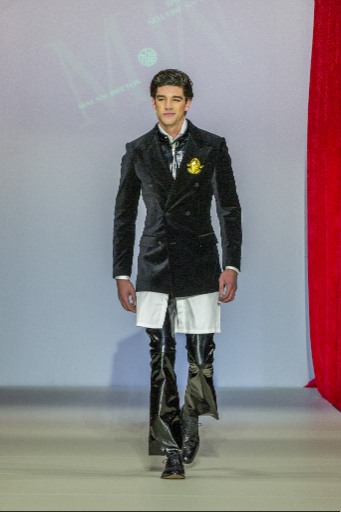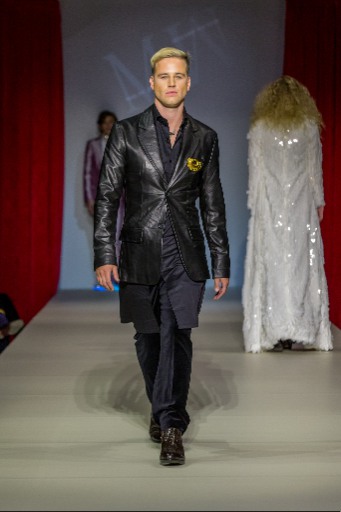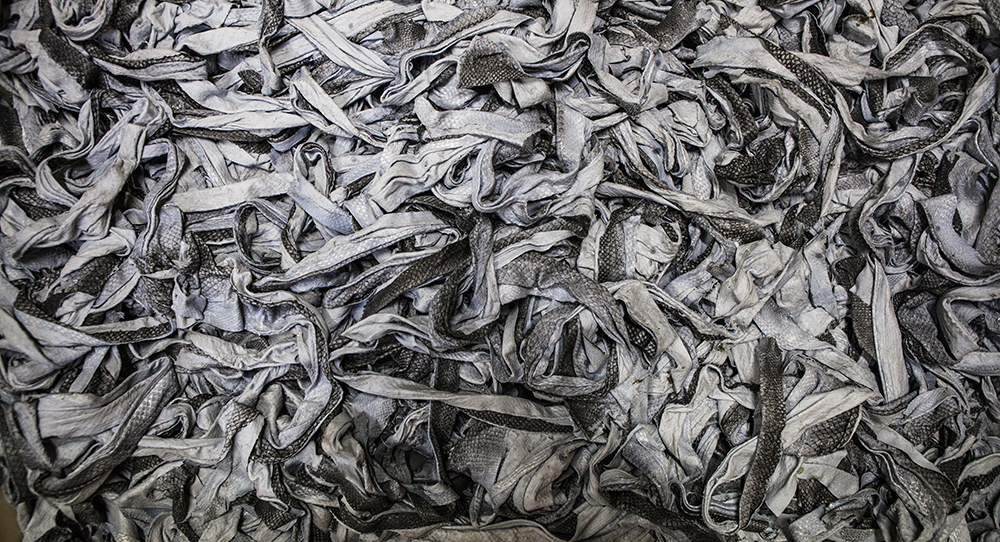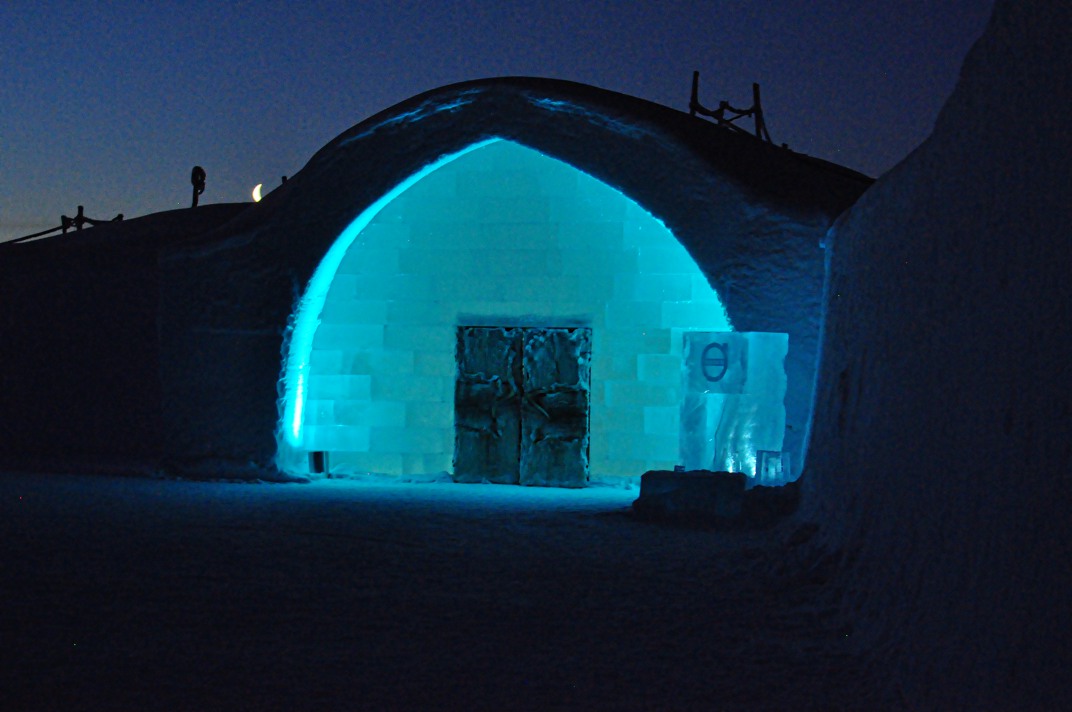Topic: ART NEWS

| « | February 2016 | » | ||||
| S | M | T | W | T | F | S |
| 1 | 2 | 3 | 4 | 5 | 6 | |
| 7 | 8 | 9 | 10 | 11 | 12 | 13 |
| 14 | 15 | 16 | 17 | 18 | 19 | 20 |
| 21 | 22 | 23 | 24 | 25 | 26 | 27 |
| 28 | 29 | |||||



Malan Breton: Fall Winter 2016 Collections
at Gotham Hall

On February 11th at Gotham Hall in NYC, , Taiwanese-born American designer Malan Breton based in New York City showed us effortless, classics. Breton launched his namesake label "Malan Breton" in 2005. The label is associated with menswear, womenswear, outerwear, accessories, and bridal.
If there is one fashion icon through the ages that men have aspired to look like, it is undoubtedly James Bond, agent 007, super spy, super stud, super stylish and the most fashionable. The 60s look is everywhere now and nobody carries it better than the models on Malan Breton's runway.
The first look traveled us back in time to the world of bell bottoms. These were utterly fantastic. These Beauties have been specifically designed for the flare wearer. We think Breton hit this look spot on with the addition of an extra long shirt beneath a super sleek jacket.

This model below, with his super fit body, defined muscles and slim lapels, slim trousers worn with another extra long shirt, slim tie and a gold embellishment on his breast pocket. It is thoroughly classic tailoring .... the jacket is tight through the body and sleeves , and it is short like the current men's fashion trends (it doesn’t completely cover the buttocks while traditionally a men's jacket should be covering his rear and we loved that!). The leather jacket has padded shoulders, a 2-button front, with narrow lapels that roll gently over the top button. The jacket with its two buttons, with the last button left open, double dart in the front, flapped pockets and double vent in the back. In traditional Breton fashion, he uses a flat-front trouser which are also super slim fit and have a very low rise. All in all, a very modern fashionable fit. Just remember : if you wear a 3 button front jacket ... just do the middle button only ... and never button the last button in your jacket cuff.

These looks on the runway were effortlessly stylish, whether the models were going to be street jumping in a suit or gunning for the enemy in a gillet.
A man should never look shabby, he should always be perfectly groomed. The male models in the show clearly were definitely having some 007 moments. Men often dress immaculately but then forget about the grooming, the look is lost. If you don’t attend to details like that that then it won’t matter how well you’re dressed, Breton nailed it in this show. So many shows I attend miss this.
So, clean-shaven good looks aside, what is the key to Breton's success? It’s not only about the clothes themselves but the effect they have on the wearer. A person may say to themselves, I would never wear that extra long shirt with my jacket or these colors." Yet, it creates a whole new look, a persona that is edgy that everyone will envy. The Breton style is so attractive because he always creates clothes that make the wearer feel confident. It's that confidence, that’s so attractive. As a woman I would wear every one of those male looks. Every one! They are the epitome of classic style with an edge. LOVE IT!

A suit – not a good suit but a very good suit – is the one garment a man can wear that can make him feel like he owns the world. The man looking to make an investment in a suit should stick to a classic cut and going bespoke. I prefer a simple, single breasted suit because you can always dress it up or down. Double breasted ones always look shabby when opened. Tailored isn’t just better for the fit but for function too. When a suit fits like a second skin you can do so much more in them.
Clothes should never dress the man or overpower him. Breton has created a lovely balance in this collection, no one is overpowered. You should see the man first and the clothes second, which is why Breton's collection allows the wearers personality to shine through.
I quite like gloves but many probably never spend more than about 45 seconds trying a pair on before making a purchase. I want to see more gloves on men that fit them beautifully. The days of wearing oven mitts on men should become a thing of the past, something we all revolution to ban. Adding gloves to some of these looks would take them to another level of sophistication. They should look beautiful but nobody should really know why – they should just be part of you.
The accessories in the show were exquisite. They should be there but never too obvious and they were not too obvious in the show. Little details – things like amazing cufflinks, pins, belts – are so important when it comes to dressing. They should say something about the man or woman you are and have a history behind them.
But whilst details matter, they should never dominate an outfit. If you’re nervous about accessories, paring things right back to a pocket square. You can say so much with something as a simple a pocket square. It’s a specific and precise detail which always adds a touch of understated elegance. To make sure it’s on point I suggest wearing it straight, allowing exactly 1.4 of an inch to show above the pocket. It's always better for a man to take something off rather than to add something to their outfit.
Breton is a man who has created his own style - one that’s outside fashion. This is why his looks always are timeless. Key to this elegance is choosing classics, using great fabrics, and paring things back and keeping things simple. That applies to causal wear too. Stick to classics like roll necks – in cashmere because a man’s clothing should always feel soft and luxurious to the touch – and polo shirts in neutral colors and you will always look elegant. Bravo Malan! Thank you for another lovely runway.


Fish Can Be Chic
Sauðárkrókur, a utilitarian town that overlooks Iceland’s beautiful Skagafjörður, doesn’t immediately scream high fashion. But Gucci, Prada, Dior, Jimmy Choo and Nike are just a few of the names to have sent orders to this chilly corner of north-west Iceland for one of the quieter luxe trends of recent years: fish leather.
Since 1991, the family-run Loðskinn tannery has been perfecting a formula for turning fishskin into leather – a substance said to be seven times stronger than cow leather. It’s entirely sustainable, and some of the salmon leather is even machine-washable. Loðskinn is Europe’s only fish tannery, tanning around a tonne of fishskin every month, 98 per cent of which is exported and turned into luxe shoes, jackets, iPhone cases and more.

“When our technicians started trying fish leather, it would just turn into soup,” says Steinunn Gunnsteinsdottir, who works for the Tannery Visitor Centre and runs tours. The tannery is part-owned by her parents, and has employed her grandmother, uncle and brothers. “It’s an incredibly delicate, complicated process, and it took skilled technicians three years to find the right formula to create such high-quality leather. There aren’t many people who know how to do this, and we’re very protective of our method.”
The Loðskinn tannery was originally founded in 1969 to produce decorative long-hair lambskins from the many Icelandic lambs whose skin was just being discarded. One of its earliest clients was the Danish Dam company, which used dyed Icelandic lamb hair for the hair of its iconic troll dolls.
Things were going fine until 1991, when sheepskin from the new Russia flooded the market, causing prices to plummet – and forcing the tannery to look at new ways to make money. “It was a case of looking at what we have and diversifying,” says Gunnsteinsdottir.
So, in 1995, with the secret fish-leather formula perfected, Atlantic Leather was formed as a sister company to Loðskinn, with the two companies merging last year. Today, Atlantic Leather still produces around 2,000 lambskins a month at the tannery, with longer and clipped hair, as well as reindeer skins, all of which are sold at the tannery’s shop along with their fishskin products.

“We’ve always used products that would otherwise go to waste,” says Gunnsteinsdottir. “Nothing is ever killed for the sole purpose of collecting the hide, and we only use geothermal energy while tanning the skins, making the process very eco-friendly.”
The tannery, set in a huge warehouse, is all steam and heavy machinery. The livestock tanning – which usually takes 3-4 weeks – takes up most of the space, but one section of the factory is dominated by small strips of tactile fish leather. Some skins, such as cod, are scaly, while others have a velvety smoothness. Some are dyed in piercing blues and pinks. These slivers of leather might come from Norwegian salmon, with an almost suede-like consistency, or perch from the Nile.
In Iceland, fish leather dates back to the 1700s, when a volcanic eruption wiped out much of the country’s livestock. Shoe designer Salvatore Ferragamo used it during World War II, when other supplies were scarce. Today, 150 million tonnes of fish are processed annually, so turning an abundant waste product into high fashion makes perfect sense. The problem is that only the very best specialist tanners can create beautiful leather rather than fish soup – and they’re not sharing the secret.

SOLO FLIGHTS FESTIVAL RETURNS TO PASSAGE THEATRE
In honor of Passage Theatre’s 30th Anniversary, the popular Solo Flights Festival has returned by popular demand to the Mill Hill Playhouse. The festival was retired 5 years ago in favor of selected single artist events.
The Solo Flights Festival features a variety of 6 one-person plays written and performed by 6 artists.
This season’s line-up brings to the stage in rotating repertory:
· An adaptation of Claude Brown’s Manchild in the Promised Land, by Joseph Edwards, directed by Wynn Handman, March 3, 5, and 6. In this coming-of-age story, young Claude struggles to find his identity and keep his sanity to overcome social ills and turn his life around. The play explores themes of education, the power of choice, and self-awareness.
· Panther Hollow, written and performed by David Lee White, directed by John Augustine, performs March 4, 12 and 18 and is a comedy describing life at 25 years upon encountering two dead bodies, a Jacobean tragedy, drugs, Satanists, skinheads, Elizabeth Wurtzel, and Nordic death metal. Coming of age in the Midwest can be tough.
· Remembrance Day, written and performed by June Ballinger, directed by Janice Goldberg, performs March 10 and 20 and follows the memories of an 80-year-old former British code breaker attending a Remembrance Day service in England. She looks back on her life and the secrets about her work and identity that she has held for over 50 years.
· Playwright and performer Leslie Ayvazian reads from her collection of storiesMention My Beauty on March 11 and 19, centered on growing up in the 1960’s and 70’s, a time of rebellion and action and indignation. Although she joined organizations like VISTA…her attention was elsewhere.
· Etty, crafted solely from Etty Hillesum’s writings during the Holocaust, is an unconventional theatre experience written and performed by Susan Stein that brings the audience into Etty’s thinking as she wrestles to write the life she is living – her loves, her work, her wry sense of humor and her knowledge of self in this moment in history, all whilst confronting God. March 13 and 14.
· Improviser and storyteller Alex Clothier tries to tell us what happened when Grandma was hit by a train in Everything’s Fine!, through an exploration of family and memory an intimate night full of secrets, laughter, and food. March 17.
“This has been a long popular type of storytelling with audiences internationally and has the benefit of providing each theatre artist control of their own artistry and career,” Artistic Director June Ballinger explains. “And it affords Passage the opportunity to curate a wildly eclectic month of theatre with a variety of stories, theatrical forms and generations. There is truly something for everyone, though oddly enough a common theme is pondering the ‘coming of age’…whether 25 or 85! People were dismayed to see us stop the festival a few years ago, but we decided we needed a change. But we are back!”
Passage Theatre has been committed to original new work with an emphasis on socially responsible themes for 30 years. The professional (Actors Equity Association) company performs in the historic Mill Hill Playhouse in Trenton.
TO GO
Date: Mar 3 - Mar 20, 2016
Address: The Mill Hill Playhouse, 205 East Front Street, Trenton, NJ (Secure Parking)
Time: 8 pm Thursdays-Saturdays; 3 pm Sundays
Tickets: $25. Discounts for seniors, groups and students
Purchase at www.passagetheatre.org or 609-392-0766
DIRECTIONS: www.passagetheatre.org
Passage Theatre’s mainstage supporters are: N.J. State Council on the Arts, a partner agency of the NEA; Geraldine R. Dodge Foundation; The City of Trenton; WIMG 1300; The Curtis McGraw Foundation; The James Kerney Foundation; PNC Bank; The Garfield Foundation; Princeton Area Community Foundation; The Horizon Foundation for New Jersey; The Shubert Foundation; New Jersey Manufacturers; Church & Dwight; Mary G. Roebling Foundation; Anonymous; and Fidelity Savings Bank.

By Tammy Duffy

If you love art, the Ice Hotel is definitely a place you need to experience. The Ice Hotel is situated more than 200 kilometers above the Arctic in Jukkasjarvi, Sweden. This little village lies alongside of the Torne River is home to 900 people and 1,000 dogs. In the winter, the temperatures in this area can get below -40 degrees Celsius, yet the magical kaamos and northern lights create panoramic light shows across the winter sky. The ICEHOTEL was founded in 1989 and is the world's first hotel made of ice and snow.
Every year there is a new ICEHOTEL erected created from the ice of the Torne River. When the first snow has fallen, artists from all over the world come together in the village to take part in creating this incredibly unique livable art exhibition.
"The ICEHOTEL is an art symposium in a class of its own. The energy released there when creative people from a wide variety of backgrounds and places meet the ice is tangible, says Arne Bergh, partner and sculptor who has been part of the ICEHOTEL since the start 26 years ago.
The artfulness of the ICEHOTEL is a direct result of the extreme creativity of several artists. This year there were 42 artists who participated in this project in Jukkasjarvi. The notion that the work would take several weeks to months to complete is a bittersweet feeling for some.
When the cold arrives to the Arctic, the river also slows down and the landscape changes shape. Huge blocks of ice, weighing two tons apiece, are harvested from the river in the late winter of the prior year. It is then stored for the next years hotel. With this material they are able to cast the building "snice" (mixture of ice made of water from the river). The snice is sprayed onto molds, which are removed once the structure has consolidated. It's then up to the creative process to develop the hotel.
Room after room is an exquisite, romantic interlude of snow and ice. There is an extra dimension added to the experience with customized, challenging light effects. There is a presence of traditional Sami art, heavy chandeliers made of ice (weighing 250kg), 50 rooms for guests, an ice bar, a sauna and much more.
This years ICEBAR at the ICEHOTEL was named Tribute. It was so named as a tribute and celebration for all the artists, creative types and builders who have contributed to the ICEHOTEL for the past 26 years. It was also a tribute to the actors, musicians, and artists throughout the world who spread joy and happiness through their creativity.
The ARTSUITES, leave their guests mesmerized with wonder. I was blessed with the ability to stay in the suite, Don't Say Don't Cry, created by artists Urs Koller and Petri Tuominen. I told my travel agent I wanted an elephant in my room when I made my reservation. At that time they were just beginning to build the hotel for this year. This was a trip for my 50th birthday. When I arrived my breath was taken away by the room. I literally shed a tear. I slept very well in the suite. The reindeer skins are incredibly comfortable. The arctic blanket supplied by the hotel was so warm that you never once felt cold.
Your stay at the ICEHOTEL is something you will never forget. The surroundings were so quiet and cool, you will get the best sleep of you life. There is a survival course taught to you before you enter the suite. The course provides you with what to wear to bed and how to use the sleeping bags. There is a warm building where you keep you luggage and personal belongings. If you are planning a wedding, there is a chapel also made completely of ice to perform your nuptials.
In the morning, you are waken by a hot mug of lingonberry tea before you head off to the sauna to refresh yourself for the day. There is a delicious breakfast buffet included with high tech juice and water machines that make you feel like you are in an episode of the Jetson's.
As of next year, the plan is to make a hotel, bar and art gallery of ice, open to visitors every day of the year. The new building will be combined with traditional methods and modern, sustainable energy.
PHOTOS BY DUFFY Copy link below into your browser.
https://www.facebook.com/media/set/?set=a.550310898464818.1073741853.359697407526169&type=3
VIDEO of DOGSLED RIDE THROUGH WOODS: (We apologize for the thumb in the video, we lost our connector for the GOPRO on the trip)
https://www.youtube.com/watch?v=7a3D28J1YmU
TIPS FOR TRAVELING TO ICE HOTEL:
1. Fly SAS. Their pilots now how to take off and land in the snow effortlessly.
2. Use Vaseline as your moisturizer for face and lips. You need the oil on your skin. 99% of moistuizers have their first ingredient as water. Water on your skin is not your friend in the arctic.
3. Do not go out into the cold for two hours after you shower. This allows for the natural oils to replenish on your skin
4. Take lots of batteries. The cold will eat up the battery life very quickly. Nikon only guarantees proper function of any SLR up to -10 degrees. Be careful for condensation on the lens or camera and permanent destroy the camera. Keep your exra batteries warm as well. If they get cold, they will not work either. You your hand warmers in your bag to keep them warm.
5. Do not wear your good watch. The battery will be eaten up the first day. This happened to my Ebel. But you are on vacation so who cares what time it is.
6. Keep you cameras inside your coat. Take a backup camera in case one does not work as well in the cold. I used Nikon my DSLR with AA batteries adapter. I took my 30-80mm analog lens that work on my DSLR for my Nikon. I also used my Nikon Coolpix. The DSLR(d90)was more sensitive to the cold (but was not as rigorous about putting it in my coat). The Coolpix worked great all day as long as it was in my coat.
7. Dress warm in layers. Wear mositure wicking thermals
8. Merlino wool is your best friend, socks and thermal wear.
9. Schedule excursions with companies that supply you with boots, gloves, hats and snowsuits. This will help with what you do not have to pack for your trip. The excursions are wonderful and let you experience the cultural of Sami life. Highly recommend you do as many as you can.
10. Take one bag for all your belongings for your trip. Pack light.

Forget Gypsy Gyms
Mercer County Has Free Certified Health Programs

A recent National Health and Nutrition Examination Survey (NHANES) indicates that an estimated two-thirds of US adults are either overweight or obese . Here in Mercer County, 58.5% of adult residents have body mass index (BMI) scores in the overweight or obese range. Yet there is a gym, yoga studio, boutique workout world popping up on every corner of Hamilton, NJ. How many of these gyms actually have certified physicians, or sincerely qualified (buying your yoga, trainer certifications on the web do not count) individuals. Some gyms go as far as saying they will do a movement Screening, which they charge you for and recommend it be repeated every few weeks. They state they are screening for pain and discomfort. Who is doing this screening? If one investigates who actually works at the gym you will find its Mom who is making lunch for their kids and then dashing off to teach a yoga class at the gym. This is how clients get hurt at gyms. They get sucked into these manipulative marketing campaigns, with the promise of a slimmer waistline and a rock hard abdomen.
The manipulation continues when the gyms state they will work with your physicians when you do get hurt to develop another fitness regiment that in the end will hurt you again. Who at the gym is actually qualified to make these assessments. You will find no one is. The Medical societies need to understand what is happening in this arena and turn then into the better business bureau and other agencies to warn the public. These gyms are hurting clients, not just physically but also monetarily .
These same gyms, big and small, are making claims about lifestyle choices and the foods you need to eat. Yet, they do not have one licensed or certified dietitian on staff. This is just criminal. These people are playing with peoples lives. They look at their clients as a meal ticket for their own greed. They are not medical professionals and they are making recommendations to people who may be diabetic, have an auto immune disease, etc on how to eat, how to move, what exercise regiment to perform. These gym staffers are putting the lives of their clients in their hands. There needs to be severe changes in marketplace before more people get hurt. The gross incompetence that is occurring within the walls of these gyms is costing the American public millions each year.
The false promises made by the gym owners are no different than that of a fortune teller. Fortune tells will say, if you pay me twenty more dollars I can remove the bad karma from your life. Burn this candle and your life will be all better. The gym owners are not different.
Children are not immune from this growing trend with many deleterious lifestyle behaviors being unconsciously transferred from adults to children; as such, there is no surprise that an increasing number of children are becoming obese or overweight. Children and adults alike who are obese or overweight are more likely to feel stress, and overweight children are more likely to report that their parents were often or always stressed over the past month.
While understanding the link between physical well being and behavioral health has substantially improved over the past few decades, much needs to be done to stem the problem. Mercer Partnership views the dynamics underlying the issue of obesity as inextricably linked to the same dynamics underlying the aforementioned public health priorities of substance abuse and mental health. The gravity of the situation can be as highlighted by recent findings: Children who are overweight are more likely to report they worry a lot or a great deal about things in their lives than children who are normal weight (31 percent vs. 14 percent).
American society has become 'obesogenic,' characterized by environments that promote increased food intake, nonhealthful foods, and physical inactivity. Policy and environmental change initiatives that make healthy choices in nutrition and physical activity available, affordable, and easy will likely prove most effective in combating obesity.
Overweight children are also significantly more likely than normal-weight children to report they worry about the way they look/their weight (36 percent vs. 11 percent). Although parents, regardless of their weight, are likely to report they feel it is important for their child to have healthy behaviors, there are findings that suggest that leading by example is also very important. Children who believe they are overweight are significantly more likely than those with a normal weight to report that their parent has been always/often worried or stressed about things in the past month (39 percent vs. 30 percent). While obese parents are equally as likely as those of normal weight to say it’s important to them that their children eat healthy foods and stay physically active (77 percent of normal-weight and obese parents), survey results suggest parents who are overweight are less likely to engage in the healthy behaviors they value.
There are various factors that contribute to obesity ranging from genetics to lifestyle choices. While genetic factors contributing to this growing epidemic are not modifiable, lifestyle choices that put residents at health risk can be controlled and monitored. With regular doctor visits and check-ups, professionals in the medical profession can offer assistance and tools on how to eat properly, maintain appropriate weight, and recognize early warning signs of more significant illness. The obesity ‘epidemic’ has not only been fueled by behavioral choices, but also by a resident’s financial situation needed to purchase food items with more desirable nutritional value. Minimal education on how to maintain a balanced diet contributes to the rise of obesity. Personal finances have an effect on how people shop and, ultimately, the decision on whether to purchase nutritional or pre-packaged and processed foods. Agencies need to evaluate internal policies and practices in order to ensure appropriate Food Pyramid information is provided for those who might benefit from such. Food Choices In a nation with a fast-paced lifestyle, fast-food restaurants become the primary source of food for many families. With the growing list of dollar menu items, where prepared foods can be purchased inexpensively, consumption of healthier fresh fruits and vegetables suffers. Since these foods have been converted from their original state to a consumable and convenient format, many of the valuable nutrients needed to maintain a balanced diet appear to be missing. The 2005 USDA Food Pyramid highlights the changes that have occurred in understanding what comprises a healthy, balanced diet.
The Mercer County Nutrition Project has been distributing materials on the Food Pyramid throughout the County to seniors and those people participating in the 21.2% of Mercer County Residents reported not having participated in any physical activity. Nutrition Project since the development of these guidelines.
General information is available from the USDA at the www.MyPyramid.gov website; this portal provides personal worksheets and dietary guidelines that can be individualized based on demographic factors and targeted goals. To combat the risk factors of poor food choices and sedentary lifestyles, many home, community, and work environments would be well served by supporting individuals in pursuit of physical active. Assessment work by the Mercer Partnership revealed evidence to suggest that a sizeable portion of county residents perceive a lack of safe, appropriate playing space and equipment needed to remain physically fit. These factors could make it difficult for people to obtain the recommended daily physical activity needed to maintain a balanced diet; increasing the likelihood of them becoming overweight and even obese. Additionally, lack of physical activity leads to the onset of chronic diseases such as diabetes, hypertension, and heart disease. Residents have ample opportunity to avail themselves of the myriad opportunities for physical fitness existing both in-county as well as within a short drive. The Partnership acknowledges that many local resources are underutilized, likely due to suboptimal marketing of services. For an example of how one entity has been able to broadcast its wealth of resources, one can look to the Mercer County Park Commission (MCPC). The MCPC distributes annually 5,000 copies of its Directory highlighting all the parks, programs, and services located throughout Mercer County. Many local municipalities maintain parks and areas of recreational opportunities as well.
Forget using these gypsy gyms....use the government resources that you already have paid for. Take advantage of the programs that already exist and have been developed by real doctors, certified dietitians and people who do have your well being as their primary focus, not their own bottom line.

“This is an opportunity for students, faculty, staff, alums, and visitors to Rutgers to contribute to a portrait of the university here and now,” says Donna Gustafson, Curator of American Art and Mellon Director for Academic Programs at the Zimmerli. “What does life look like at a great research university that includes over 40,000 students distributed at Newark, Camden, and New Brunswick? I’m looking forward to finding out.”
As new photos continue to be uploaded (they must date after January 1, 2015), they will appear in the online gallery, then be printed and added to the museum exhibition. In addition, 250 of the most compelling photos submitted by May 15 will be selected to be included in a full-color commemorative book that will be published in November of 2016, at the culmination of the university’s 250th anniversary.
HOW TO PARTICIPATE:
Rutgers 250 is a yearlong celebration marking Rutgers University's founding in 1766, honoring the university’s past, present, and future with a series of events, programs, and gatherings. The history of Rutgers begins on November 10, 1766, when William Franklin, the last Colonial governor of New Jersey, signed the charter that brought Queen’s College into existence. In 1825, the school was renamed to honor Colonel Henry Rutgers, a Revolutionary War veteran. In 2015, poised to celebrate 250 years, Rutgers is one of the most highly regarded institutions of higher education in the nation, with more than 65,000 students and 24,400 faculty and staff in New Brunswick, Newark, and Camden, and at locations throughout the state. Complete information and a list of related events can be found at 250.rutgers.edu.
The exhibition HereNow: Rutgers 250 is supported by the Estate of Ralph Voorhees, and donors to the Zimmerli's Major Exhibition Fund: James and Kathrin Bergin, Alvin and Joyce Glasgold, Charles and Caryl Sills, Voorhees Family Endowment, and the Jerome A. Yavitz Charitable Foundation, Inc.--Stephen Cyphen, President. Related public programs are supported by the Friends of the Zimmerli Endowment Fund.
The book HereNow: Rutgers 250 is supported by the Class of 1937 Publications Endowment Fund.
Questions asked of Property Assessors tonight at township meeting
RQ: Resident questioning Property assessors hired by township
THPAR: Township hired property assessors response
We as residents paid this company $1.6 million dollars to do this assessment. Residents of Hamilton definately need to question the data they were sent.
Residents Question: Did you inspect every home in the township? Would you say you did 50% all the properties?
Twp Hired Property Assessors Response: We went to the property and made measurements and visually inspected the outside of the home. But I do not know how many properties we actually physically assessed. If a resident had no trespassing signs or a gate that was locked, we did not measure the property.
RQ: I have a locked gate, so how did you measure my property? According to what you just said you would have left and not trespassed and did the measurements. Can I see the measurements you did and what information you have on my home?
THPAR: No, these are not a part of the public record so I cannot show you this information. I can tell you that you have a 4 bedroom home, we estimate 2.5 baths, a deck, and 8 rooms. We also default to stating on the report that you have a finished basement.
RQ: What? My basement is not finished.
THPAR: Sorry, I cannot share this with you. We can still make changes to the document at this time. If we did an estimate vs. what is real and it needs to be corrected, then the document would change.
RQ: Where you observant of the traffic and truck issues at front of my house? Was that taken into consideration with this assessment. Our homes are being destroyed and the township refuses to acknowledge what is happening. They never answer any of the residents for over a year now.
THPAR: They gave you an adjustment for the easement on your land and for the traffic.
RQ: An easement is an encumbrance upon a property. This means that the fee owner's interest is subject and subordinate to the easement beneficiary's interest. Thus, the property is encumbered with a burden to which the property owner (and all future owners) must submit.
No matter what type of easement or the terms, any property burdened by an easement will have a diminished value in comparison to the same property without that burden. Do you have what the adjustment is for the traffic.
THPAR: No, I do not.
RQ: Why not? How did you come to the assessed value if you cannot share with me these datapoints?
THPAR:I do not make the decision on the adjustments. The person who did the value on the property did this. The project Manager, Dan Gotti.
RQ: So when I called him why did he not share this with me? I am glad to see an adjustment was made due to the massive traffic. Our homes are getting destroyed. It is a 24 hour/ 365 day a year earthquake that is hitting our homes and the township refuses to do anything or even respond to our requests for assistance. I had a realtor come to my home and they said, "Whatever you want to ask for your home, take 20% off of it due to this noise pollution and the degradation from the trucks. I do not even know when I would show your home."
The Mayor, Planning and compliance, legal, and business administration within the township refuse to respond to any of us. We have replaced numerous windows, repaired cracks in our foundations and walls for the past 10 years.
There is a water cut out in front of my house that is leaking still, there is an ice skating rink in front of my home from it. The township approved nine more trucking companies to enter at the end of Whitehead road, increasing the truck traffic even more. There are gasoline trucks traveling in the residential areas.
When they did all the construction for American Metro Way there was supposed to be calming measures installed on the roads. None of these measures have been installed, yet the contractor, who contributed thousands of dollars to the Mayor's campaign was paid to install those calming measures. How did the township award certificate of occupancies for the condo's and American Metro office complex if the project was not completed? We have asked the Mayor this very question, she refuses to respond.
THPAR: This gives us another chance to review this assessment.
RQ: Sit on my porch you will witness first hand what goes on with the trucks. You will see how it shakes the entire home, how things are knocked off the walls. They said today there was some sonic boom people felt at their homes in NJ. That is how it is every day at my home. The township refuses to acknowledge this.
I would like to better understand how you came to this revised assessment. I need to know what % was used for these adjustments. What was the total value given to my home?
When I spoke to Dan he said that you only used the local sales of the homes to come to the assessed value. This contradicts what you are telling me.
THPAR: We went to the homes and did measurements.
RQ: Well this is not what I was told, I am glad there was more of an assessment. In the past the calculation was based on 70% FMV, it is not based on 100% FMV. This is was not shared by the township to the residents that this would be the case.
Their communication to us SUCKED
THPAR: Yes it did.
RQ: I asked the township to supply a certificate of insurance for your company to enter my home. They refused to supply that. If I have a contractor come to my home, no matter what it is, I asked for that. Why did they not supply that?
THPAR: They never asked us for it.
RQ: Why could they not have posted it on their website.
RQ: If I called Dan would he give me the adjustment information?
THPAR: I am not sure. I cannot guarantee he has this information.
RQ: Why not? If he is in charge of doing the calculation and making the adjustments he should have the information. By not sharing this information it makes me feel like you are hiding something.
THPAR: I am sorry I do not have this information.
RQ: Why did they not give you this information for these meetings?
THPAR: These meetings are for us to hear why you feel the number is not correct.
RQ: But if you cannot share with me how you got to the number and the adjustment values. How can I have a conversation with you on the assessed value.
THPAR: I am sorry I do not have this information.
RQ: Then what is the purpose of this meeting? This seems like a waste of time if you refuse to share how you came to the assessed value calculation.
THPAR: Sorry, I cannot share the specifics nor do I have how this was calculated. We will call you to set up an appointment to redo the assessment.
Residents need to be question these assessments. This group clearly has not clue what they are doing. The township has failed the residents once again.

From working in a vineyard in Oregon, to managing a traditional wine shop in Princeton; to traveling overseas,Olivia Jupillat’s experiences have taken her work on an unexpected turn: “My fascination with root and earth structures stemmed from a brief introduction to viticulture and oenology in wine school, but fully emerged into an obsession once my studies were physically revealed in front of me and I could touch the sands, taste the dirt, and see the different strides in the rocks where ancient water once was,” explained Jupillat.
Artist Paul Mordetsky says he is drawn to “the landscape as a forum for representing space and light within the graphic language.” Of his paintings in Down To Earth, Paul describes how fire inspires his work: “Fire and smoke in the dark of night or in an encompassing timeless gray have been prominent aspects of these landscapes, and imply states of mind, passion, and inspiration rather than some apocalyptic vision. I find the notion of light in darkness to be a powerful and poetic image.”
Alice Sims-Gunzenhauser’s work has focused on the use of line. As her work has headed more towards abstraction, her line has “metamorphosed into a more general focus on mark making.” “Though some marks may be lines,” Alice explains, “they are freed from the need to describe an observed reference and become entities of a somewhat different sort. When marks, whether linear or otherwise, move in and out of suggesting intelligible form, the work is most alive for me.”
Down To Earth will be on view in the Arts Council’s Taplin Gallery from February 6-27, with an Opening Reception on Saturday, February 6 from 3-5pm. Paul Robeson Center for the Arts, 102 Witherspoon Street, Princeton, NJ. Parking is available in the Spring and Hulfish Street Garages and at metered parking spots along Witherspoon Street and Paul Robeson Place.
The Arts Council of Princeton, founded in 1967, is a non-profit organization with a mission of Building Community through the Arts. Housed in the landmark Paul Robeson Center for the Arts, designed by architect Michael Graves, the ACP fulfills its mission by presenting a wide range of programs including exhibitions, performances, free community cultural events, and studio-based classes and workshops in a wide range of media. Arts Council of Princeton programs are designed to be high-quality, engaging, affordable and accessible for the diverse population of the greater Princeton region.